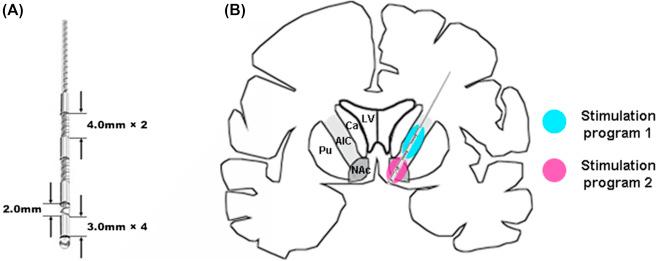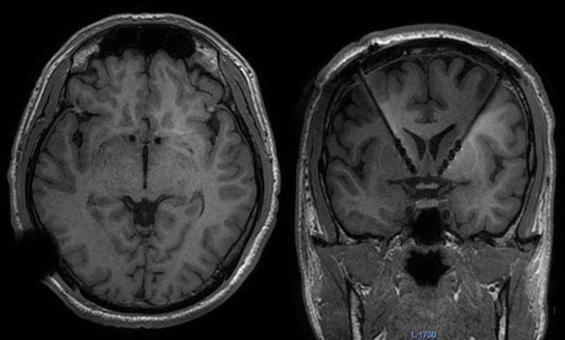Physical Address
304 North Cardinal St.
Dorchester Center, MA 02124
Drug addiction is characterized by repetitive substance abuse associated with symptoms of behavioral, cognitive, and physiological dependence, and is categorized in the Diagnostic and Statistical Manual of Mental Disorders V (DSM-V) as “substance use disorder.” Dependence is indicated by a persistent desire to use the addictive substance, continuous reckless and uncontrollable usage, and the prioritization of drug abuse over other activities and obligations ( ). Drug abuse is a serious health problem that places a heavy burden to drug users and their families. It is estimated that approximately 250 million people worldwide abused illicit drugs in 2013, which corresponds to 5% of the population between 15 and 64 years of age. Approximately 10% of drug abusers suffer from drug addiction, of whom half are intravenous drug users, and more than 10% of the latter are HIV positive. According to a survey in 2015 there were 2.3 million drug users in China (excluding those with more than 3 years in remission). Among these there were 980,000 heroin and opiate users and 1.3 million synthetic drug users. Substance use disorder remains a major health problem in China and worldwide ( ).
Treatment for drug addiction typically falls into one of two categories: drug based or behavioral intervention. Drug-based treatment is centered on a replacement approach, in which molecules with similar pharmacological properties to the addictive substance but different pharmacokinetics are used to substitute the addictive substance. The aim of this approach is to reduce the amount of drug intake, with the application of methadone in opioid addiction representing the most common example of replacement therapy ( ). Behavioral interventions such as cognitive behavioral therapy ( ) and contingency management therapy ( ) serve to rebuild the cognitive function of drug-addicted individuals and reshape dysfunctional cognitive control. There is a distinction between two core symptom dimensions of drug addiction: physiological dependence (physical dependence) and psychological dependence (emotional dependence). Physiological dependence is related to withdrawal symptoms experienced physically, while psychological dependence pertains to emotional and motivational withdrawal ( ). The latter is often a key factor in unsuccessful treatment and addiction relapse, and presents a significant challenge to the medical field and society as a whole.
With the advancement of several pilot studies and stereotactic functional neurosurgery, it is now possible to reduce psychological dependence in drug addiction effectively using a minimally invasive surgical approach targeting specific brain nuclei to regulate underlying aberrant neural activity therapeutically. Stereotactic surgery is an important field in modern neurosurgery developed throughout decades of research in functional brain disorders, and has been employed in the treatment of movement disorders, psychiatric disorders, and chronic pain in cases refractory to noninvasive treatment methods ( ). Stereotactic surgery is mainly based on invasive surgery and the use of deep brain stimulation (DBS). The effectiveness of ablative stereotactic procedures in treating drug addiction has been recognized in several clinical studies in China ( ). In comparison, the reversibility and adjustability of stimulation parameters using DBS offers a considerable improvement in terms of patient experience during treatment and recovery. DBS is therefore a promising treatment option for intractable neurological disorders .


Stereotactic technology was initially applied in psychosurgery in the late 1950s to achieve accurate target positioning while minimizing incision size and reducing the incidence rate of postoperative complications. Neurosurgeons first attempted surgical treatment of substance addiction in the 1970s. In Müller et al. reported a case of successful treatment for alcohol addiction after performing stereotactic surgery on the unilateral ventromedial hypothalamus. Five years later Dieckmann and Schneider published treatment outcomes of 15 cases of stereotactic surgery on the hypothalamus of patients addicted to alcohol and drugs ( ). Due to the occurrence of adverse events, Dieckmann and Schneider considered limited applications for targeted surgical approaches in the treatment of addiction disorders. In Balasubramaniam et al. analyzed the treatment outcomes of 28 cases of addicted patients who had undergone bilateral stereotactic cingulotomy. This was the first case study examining the suitability of stereotactic cingulotomy to treat addiction. Five years later Kanaka and Balasubramaniam analyzed the treatment outcomes of 73 cases of addicted patients who underwent stereotactic cingulotomy ( ), reporting an outcome of 60%–80% effectiveness that was regarded as a highly promising for the therapeutic potential of surgical approaches for drug addiction. In Medvedev et al. studied the long-term impacts of cryogenic bilateral stereotactic cingulotomy performed on 348 heroin-dependent patients, reporting positive outcomes in 62% of cases .
In 2000 Gao et al. performed stereotactical surgery on the bilateral nucleus accumbens (NAc) to treat opiate addiction in 42 patients at Tangdu Hospital in Xi’an, China ( ). They reported positive outcomes in 45% patients, with these patients not experiencing addiction relapse 1 year after surgery, and a rare occurrence of adverse reactions ( ). A growing number of hospitals in China began to adopt stereotactic surgery, and the number of patients undergoing this procedure increased dramatically by 2004. Taking into consideration that stereotactic surgery is still in the clinical research stage, the unclear neural mechanism underlying drug addiction, possible but unpredictable long-term complications, and other factors, stereotactic operations were suspended by the Chinese Ministry of Health in November 2004, with their application limited to clinical research. Other countries including Russia also prohibited these procedures in 2002. Following the suspension of clinical applications of stereotactic surgery in China, the cessation rate was 50% in multicenter retrospective cohort studies after several years ( ).
DBS treatment for drug addiction has a shorter history ( Table 90.1 ), with research currently still in its preliminary stages. The nucleus accumbens (NAc or ventral striatum) is the most popular target.
| Investigator | Date | N. | Substance | Device | IPG Parameters | Follow-Up | Outcome | Adverse Events |
|---|---|---|---|---|---|---|---|---|
| Bilateral NAc | ||||||||
| Kuhn | 2007 | 1 | Alcohol | Medtronic 3387 | Monopolar 1−, 2−, C+, 130 Hz, 90 μs, 3–4.5 V | 12 months | Remission | None |
| Muller | 2009 | 3 | Alcohol | Medtronic 3387 | Monopolar 0−, C+, 130 Hz, 90 μs, 3.5–4.5 V | 12 months | 2 cessation, 1 remission | Transient reversible hypomania |
| Kuhn | 2011 | 1 | Alcohol | Medtronic 3387 | N/A | 12 months | Cessation | None |
| Juergen Voges | 2013 | 5 | Alcohol | Medtronic 3387 | Bipolar with two dorsal contracts active, 130 Hz, 90 μs, 4.5 V | ≥2.5 years | 2 cessation, 3 remission | Transient reversible hypomania |
| Mantione | 2010 | 1 | Nicotine | Medtronic 3389 | Monopolar 2–, 3–, C+, 185 Hz, 90 μs, 3.5 V | 2 years | Cessation | None |
| Zhou | 2011 | 1 | Heroin | Medtronic 3387 | 145 Hz, 90 μs, 2.5 V with stimulation on for 2 years | 6 years | Remission | NA |
| Wang | 2011 | 2 | Heroin | Medtronic 3387 | Monopolar with 0–, 4–, case+, 145 Hz, 120 μs, 3.5 V | NA | 1 remission, 1 relapse | Transient reversible hypomania |
| Bilateral/Unilateral VC/Ventral Striatum | ||||||||
| Kuhn | 2009 | 10 | Nicotine | Medtronic 3387 | 130/140/145 Hz, 90/180 μs, 3–6.5 V | ≥2 years | 3 unaided cessation | NA |
| Valencia-Alfonso | 2012 | 1 | Heroin | Medtronic 3387 | Bipolar 2,3; 180 Hz, 90 μs, 3.5 V | 6 months | Remission | NA |
In accordance with the anatomical features of the ventral capsule/ventral striatum (VS), we developed a novel electrode (the Sceneray 1242) ( Fig. 90.1 ) for simultaneous and independently programmed stimulation of the NAc and the anterior limb of the internal capsule. The Fourth Military Medical University, Tang Du Hospital employed our adaptation of the Sceneray 1242 electrode in a prospective single-center nonrandom clinical trial ( clinicaltrials.gov NCT01274988 ). A total of eight cases with long-term (>3 years) opiate addiction (more than three unsuccessful cessation attempts) were recruited. Through standardized stereotactic surgery, electrodes were implanted into the NAc and anterior capsulotomy (ring angle, 68.3 ± 4.78 degrees and arc angle, 61 ± 3.25 degrees on the right side of the brain; 66.6 ± 4.1 degrees and 118.7 ± 2.67 degrees on the left side of the brain, with the stereotactic arc bow from a horizontal elevation forward 21–24 degrees and the midline 28–30 degrees) ( Fig. 90.2 ). Parameters were adjusted to be NAc target, 2–3 V, 180–240 μs, 145 Hz; anterior capsulotomy target 2–3 V, 120–210 μs, 185 Hz, wherein the uppermost contacts (3, 7) elicited a weak reaction. After 6 months of treatment and follow-up, seven patients reported significantly lower drug cravings. Six patients reported no relapse, reduced drug cravings, improvement in general mental state and depression, reduced obsessive–compulsive symptoms, and an increase in overall quality of life as well as good toleration of surgery. Based on these preliminary data, we are now recruiting patients in China for the first-ever randomized controlled trial investigating the effectiveness of DBS in the treatment of substance use disorder.
Become a Clinical Tree membership for Full access and enjoy Unlimited articles
If you are a member. Log in here